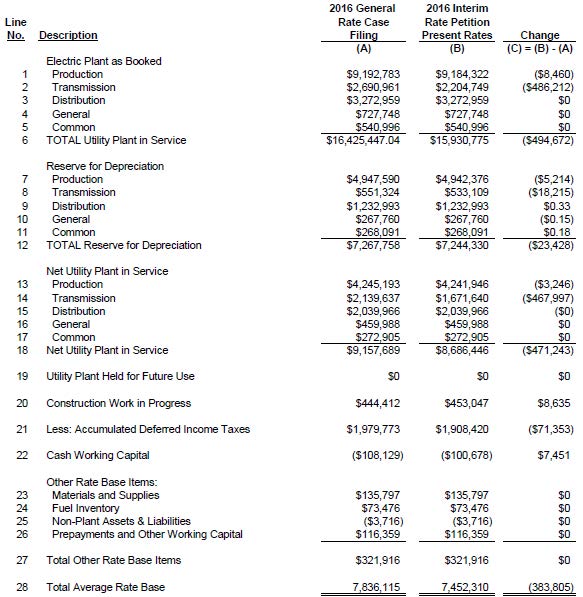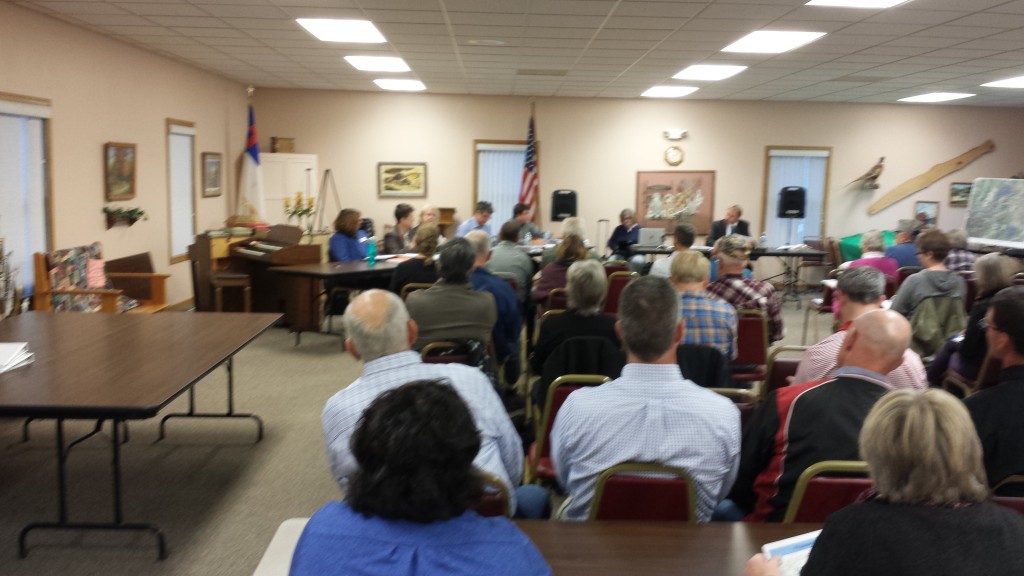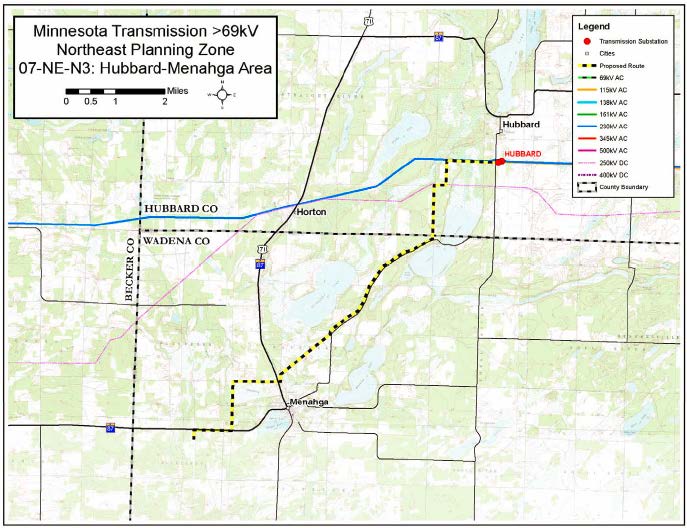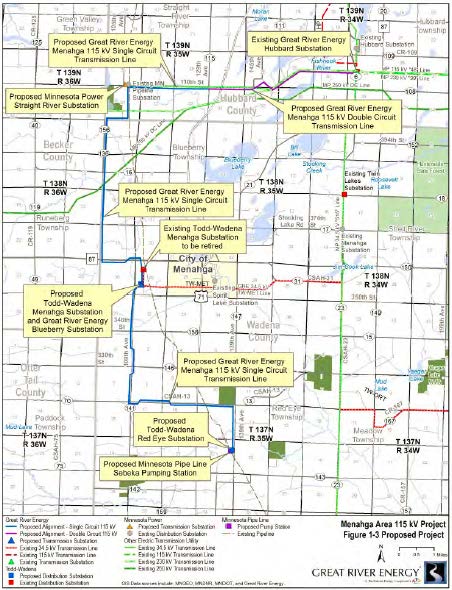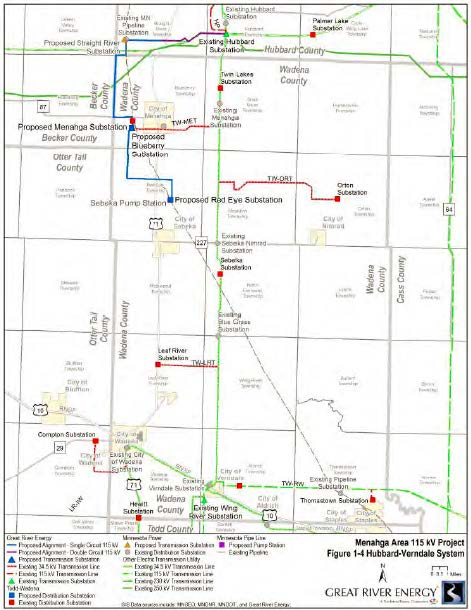Xcel’s new rate increase request
November 2nd, 2015
Xcel’s cost of electricity is down. Yet they want more money from us, 9.8% over the next 3 years, with the average residential customer’s 675 kW/hr bill to go up $11 a month. WHAT?
Meanwhile, last year at the legislature, the biggest of the big customers got a special rate category and special lower rates. WHAT?
The above graph is from Chuck Burdick’s testimony — after dealing with him in the Goodhue Wind case, I couldn’t resist checking out his testimony (Application, 2A2 – MYRP).
So if Xcel Energy was authorized a certain ROE, and only earned a much lesser ROE, does that mean we should make up the difference? Also from Burdick’s testimony:
 Were this “free market” the response would be that the company should contract, that there are too many cooks in that kitchen, that the capital expenses not for our use, such as this big transmission build-out, should not occur, and we should not have to pay for them.
Were this “free market” the response would be that the company should contract, that there are too many cooks in that kitchen, that the capital expenses not for our use, such as this big transmission build-out, should not occur, and we should not have to pay for them.
Let’s take a look at the drivers, where they’re running short — do we want to pay for this? From the Application 1:
The initial filing in this new rate case is there for the reading, dig in, I’m sure there’s something you’ll enjoy.
Just go HERE TO PUC’S SEARCH DOCKETS PAGE and search for PUC docket 15-826, opened today.
In the STrib today:
Xcel seeks 9.8 percent rate hike in Minnesota over three years
Menahga Transmission Comments just filed
November 2nd, 2015
Hot off the press, just filed:
Whew, now back on the road!
Others filed today:
Menahga Xmsn in the Park Rapids Enterprise
October 21st, 2015
Monday’s hearing in Menahga got a thorough report in the Park Rapids Enterprise. Now, will the Administrative Law Judge and the Public Utilities Commission pay as much attention?
And a little correction, “Pipeline” should be “Powerline” in the 3rd paragraph. As newspaper articles go, this is as good as it gets! Lots of detail. And the need part, the “Carol Overland question” is there in black and white.
To see the full Public Utilities Commission dockets, go to the PUC’s SEARCH DOCKET PAGE HERE, and search for dockets 14-787 (Certificate of Need) and 14-797 (Route Permit).
And in the Park Rapids Enterprise:
Hearing held in Menahga to discuss proposed transmission lines
- An east-west section between the existing GRE Hubbard Substation and the proposed MP Straight River Substation. Four and a half miles would be double circuit 115 kV lines and 2.5 miles would be single circuit lines.
- A north-south section of single-circuit lines, around 15.5 miles, would run between the proposed MP Straight River Substation and the proposed Red Eye distribution substation.
- A proposed new MP Straight River Substation, GRE Blueberry Substation and Todd-Wadena Red Eye Substation; relocation of Todd-Wadena’s existing Menahga distribution substation to the Blueberry site and converting the voltage from 34,5 kV to 115 kV. There would also be modifications to the existing MP Pipeline Substation and GRE Hubbard Substations.
Menahga Transmission Project hearing
October 21st, 2015
Tonight was the public hearing for the Menahga Transmission Project. This is A transmission project with a pipeline driver.
This is a weird project. They’re admittedly having problems with the old 34.5 kV distribution system, that was established ages ago in the GRE_Long Range Xmsn Plan_October 2008, and in the last four Biennial Transmission Plans (their application claimed that “this project” had been under discussion since 2007 as project “2007-NE-N3”):
2007-NE-N3_2007 Biennial Transmission Plan
2007-NE-N3_2009 Biennial Transmission Plan
2007-NE-N3_2011 Biennial Transmission Plan
2007-NE-N3_2013 Biennial Transmission Plan where it morphed into “2014-NE-N21”
Check the 2007 map for project 2007-NE-N3:
Does that bear any resemblance to the project they applied for:
Nope, there’s no resemblance, I didn’t think so either.
But I did find this interesting map of the “project area” that shows the 2007 area in question and more easily shows the logic behind their claim that:
There’s that green line right down the middle that’s the focus of the “problems” claimed. And from that 2007 report:
The Hubbard-Menahga 115 kV line would be the start of a Hubbard-Menahga-Wadena/Compton-Wing River 115 kV line.
Walk through that list of cities, and you don’t get anything that looks like what they proposed. It does indeed look a lot like fixing that green line that connects all the cities would answer their problems!
In the hearing, I clarified the capacity of the line, which at 140 is 7 times that needed for their 20 MW load (click for larger chart). Go to the 477 on left side (kcmil) and then scoot over to the “115” column in the MVA rating columns on the right, scroll down to the “140.” As the engineer confirmed, the 140 MVA is essentially MW…
And here’s the peak demand for the entire area, 16.48 MW, for which they’re wanting a 140 MVA capacity line:
Why?
Oh, well, there is that pipeline driver, the MinnCan pipeline over to the Koch refinery, and they want more pumping stations to increase the capacity from 165,000 barrels a day to 350,000 barrels a day. And they want to double circuit the part on the northern end, from Hubbard substation to somewhere west of that for a “future GRE project” that they will not identify further, but they did not deny that it was Sandpiper (and $50 says it is).
The good news is that there’s tofu in the neighborhood for fortification, should get three meals out of this!
Menahga Xmsn Project public hearing TOMORROW!
October 18th, 2015
Yes, it’s TOMORROW! Great River Energy and Minnesota Power want to build a transmission line to solve a distribution problem (age and overloads) and power up pipeline pumping stations for the MinnCan MPL Line 4 and for another “potential” project, oh, maybe, perhaps, the Sandpiper pipeline?
6:00 p.m.
Monday, October 19, 2015
Menahga Senior Center
19 Cedar Avenue
Menahga, MN 56464
For more information, check this Legalectric post:
A transmission project with a pipeline driver
You can see everything in the Public Utilities Commission docket, just go to DOCUMENT SEARCH HERE and search for either Certificate of Need docket 14-787 or Route Permit docket 14-797.
TOMORROW!

